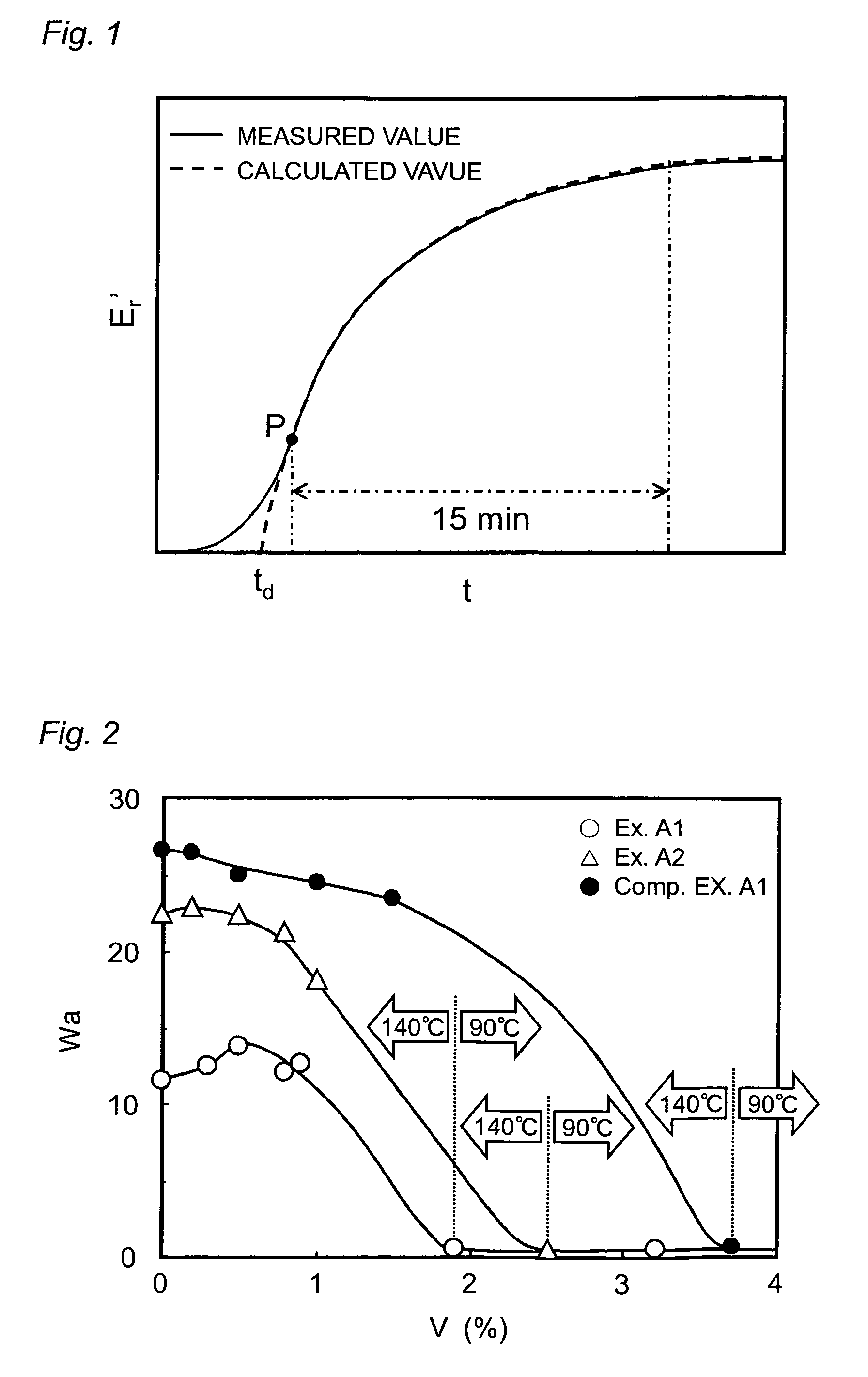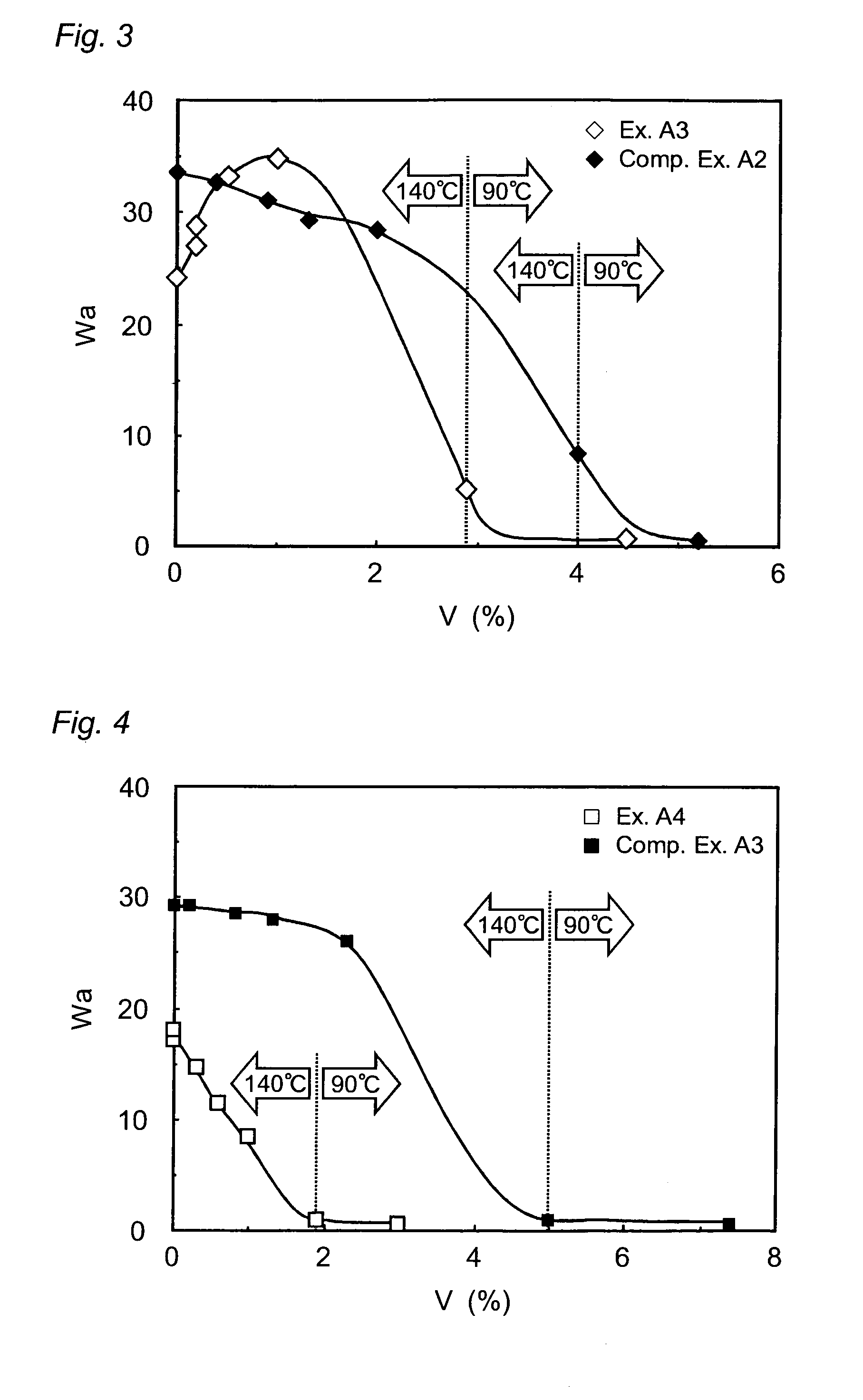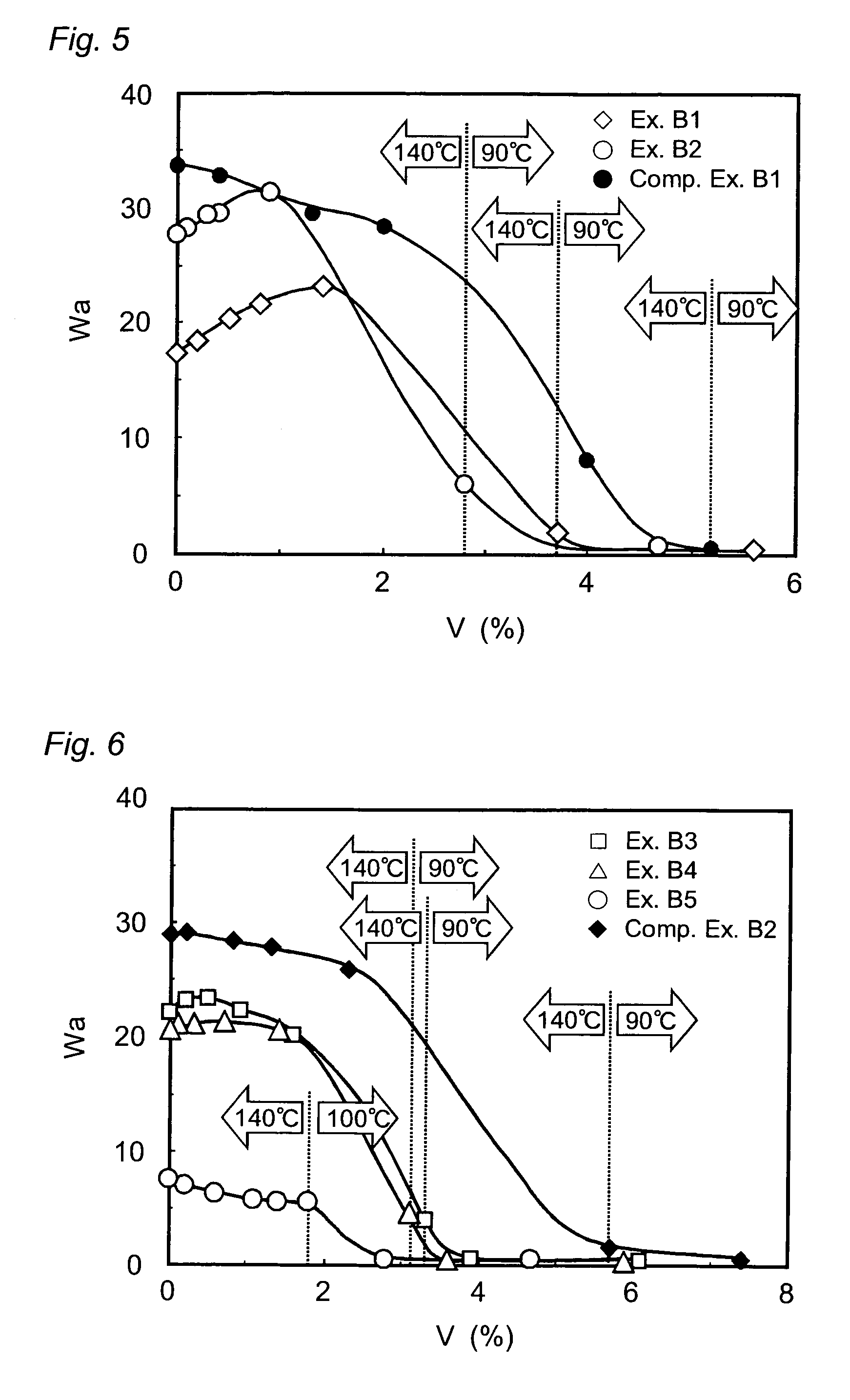Coating method and coated article obtained by the same
a coating method and coating technology, applied in the direction of pretreatment surfaces, thin material processing, coatings, etc., can solve the problems of inferior surface texture and gloss of the multi-layer coating film, and reduced surface texture and gloss of the top coating film, so as to achieve excellent surface texture and gloss, less surface unevenness, and high durability
- Summary
- Abstract
- Description
- Claims
- Application Information
AI Technical Summary
Benefits of technology
Problems solved by technology
Method used
Image
Examples
synthesis example 1
Synthesis of Acrylic Resin A
[0163]A mixture solution A was prepared by mixing 4.5 parts by mass of methacrylic acid, 26.0 parts by mass of ethyl acrylate, 64.5 parts by mass of hydroxy group-containing monomer (product name “PLACCEL FM-1” manufactured by Daicel Chemical Industries, Ltd.), 5.0 parts by mass of methylstyrene dinner (product name “MSD-100” manufactured by Mitsui Toatsu Chemicals, Inc.) and 13.0 parts by mass of azoisobutyronitrile.
[0164]Into a reaction vessel equipped with a stirrer, a thermostat and a reflux condenser, 82.0 parts by mass of xylene was poured, and then 20.0 parts by mass of the mixture solution A was added thereto and heated with stirring to increase the temperature. Thereafter, the remainder, 93.0 parts by mass, of the mixture solution A was added dropwise under reflux over a period of 3 hours. Next, a solution made from 1.0 part by mass of azoisobutyronitrile and 12.0 parts by mass of xylene was added dropwise over a period of 30 minutes, and reactio...
synthesis example 2
Synthesis of Acrylic Resin B
[0165]A mixture solution B was prepared by mixing 5.0 parts by mass of acrylic acid, 17.0 parts by mass of 2-hydroxyethyl acrylate, 66.0 parts by mass of n-butyl methacrylate, 12.0 parts by mass of stearyl acrylate and 0.8 parts by mass of azobisisobutyronitrile.
[0166]Into a reaction vessel equipped with a stirrer, a thermostat and a reflux condenser, 82.0 parts by mass of isopropyl alcohol was poured, and the vessel was purged with nitrogen and heated to a temperature of 80° C. Next, the mixture solution B (100.8 parts by mass) was added dropwise over a period of 5 hours. Thereafter, stirring was continued for 1 hour, and thereby a resin solution B containing an acrylic resin B having a number average molecular weight of 15000 was obtained. The resin solution B was desolvated with an evaporator until the solid content thereof became 80% by mass. Then, 6.0 parts by mass of dimethylethanolamine and 36.0 parts by mass of ion-exchanged water were added there...
preparation example 1
Preparation of Thermosetting and Water-Based Intermediate Coating Material A
[0167]Into a reaction vessel, 337 parts by mass of the acrylic resin varnish A prepared in Synthesis Example 1 and having a solid content of 75% by mass, 1000 parts by mass of titanium oxide (product name “CR-93” manufactured by ISHIHARA SANGYO KAISHA, LTD.) and 10 parts by mass of carbon black (product name “FW-200P” manufactured by Degussa GmbH) were put, and then 163 parts by mass of butyl acetate and 84 parts by mass of xylene were added thereto. Thereafter, glass beads (with a particle diameter of 1.6 mm) with a mass equivalent to the total mass of the put materials were added, and dispersed for 3 hours by using a bench-top SG mill. The particle size after the completion of the dispersion was 5 μm or smaller with a grind gauge. Thereafter, 84 parts by mass of xylene was added. After that, the glass beads were filtered off, and thereby a pigment paste was prepared. The acrylic resin varnish A and a melam...
PUM
| Property | Measurement | Unit |
|---|---|---|
| temperature | aaaaa | aaaaa |
| temperature Tu | aaaaa | aaaaa |
| temperature TU | aaaaa | aaaaa |
Abstract
Description
Claims
Application Information
 Login to View More
Login to View More - R&D
- Intellectual Property
- Life Sciences
- Materials
- Tech Scout
- Unparalleled Data Quality
- Higher Quality Content
- 60% Fewer Hallucinations
Browse by: Latest US Patents, China's latest patents, Technical Efficacy Thesaurus, Application Domain, Technology Topic, Popular Technical Reports.
© 2025 PatSnap. All rights reserved.Legal|Privacy policy|Modern Slavery Act Transparency Statement|Sitemap|About US| Contact US: help@patsnap.com



